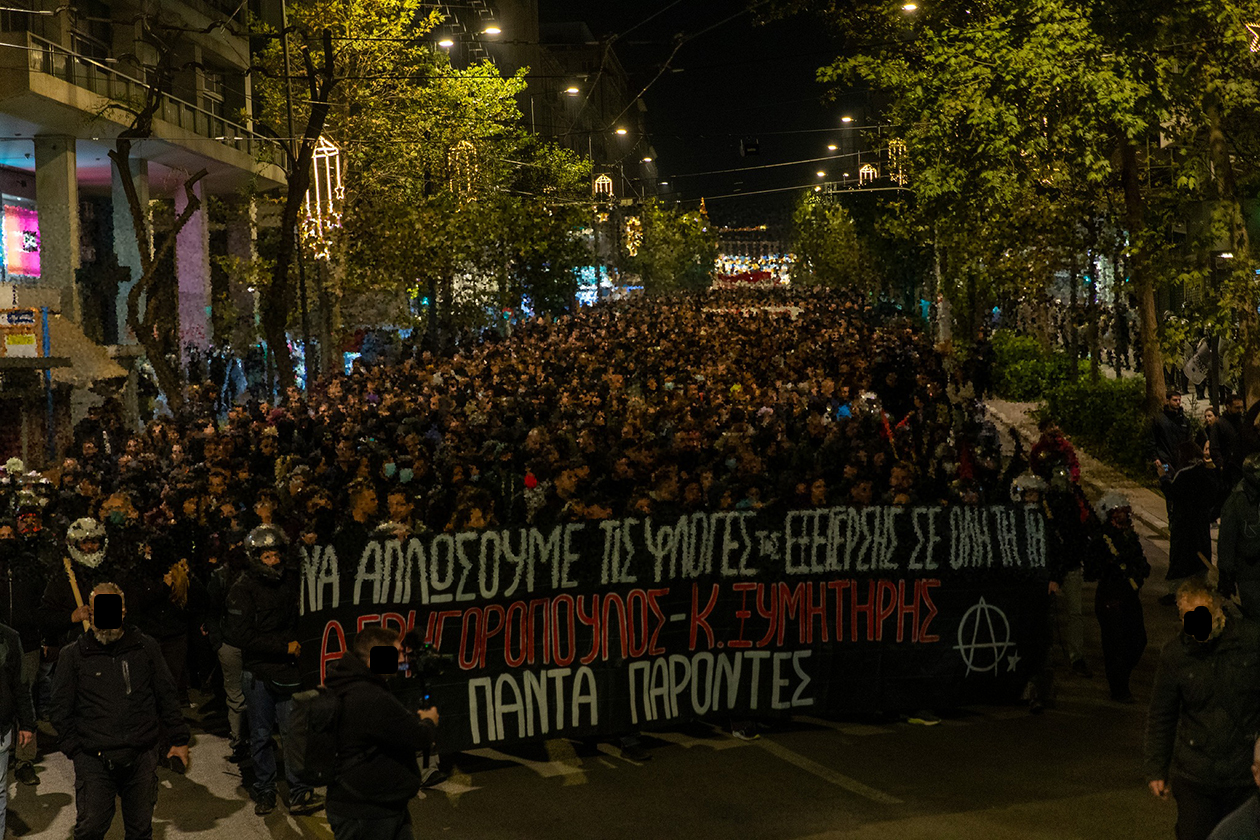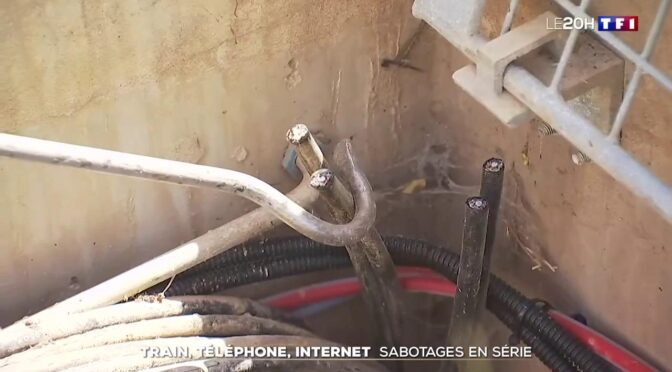While the SNCF is just beginning to recover from the sabotage against the high-speed train network, the Paris 2024 Olympic Games don’t seem to be at the end of their troubles, as a new “massive sabotage” occurred on Sunday night (July 29), this time striking the long-distance fiber optic network (the backbone).
Between 1 a.m. and 3 a.m., the digital highways of the fiber-optic network were deliberately cut in at least ten départements (Ain, Aude, Ardèche, Drôme, Hérault, Bouches-du-Rhône, Oise, Marne, Meuse, Vaucluse), with far-reaching consequences, since the section of these cables in the long-distance network of infrastructure operator SFR affected many other telecoms operators. These include Free, Bouygues, Orange (telecoms provider for the Paris 2024 Olympics), TDF, OVH, SFR, Netalis, Axione, as well as Vodafone, British telecom and Colt (British operator serving 28 European countries).
By Tuesday July 30, the official estimate was that 195 cell towers had been affected by sabotage, and at least 17 departments had experienced problems ranging from internet outages to higher-than-usual latency (including Oise, Bouches-du-Rhône, Meuse, Drôme, Aude, Hérault, Seine-et-Marne, Essonne, Ain, Allier, Vendée, Ardèche, Loire, Creuse and Lot-et-Garonne). And to illustrate what high latency means, i.e. a severe slowdown in the Internet connection, a geek posted on a specialized site the route taken by his data packets: “To do Lyon (Orange network) <> Roubaix (OVH data center), the data goes: Lyon → Marseille → Singapore → Canada → London → Roubaix”…
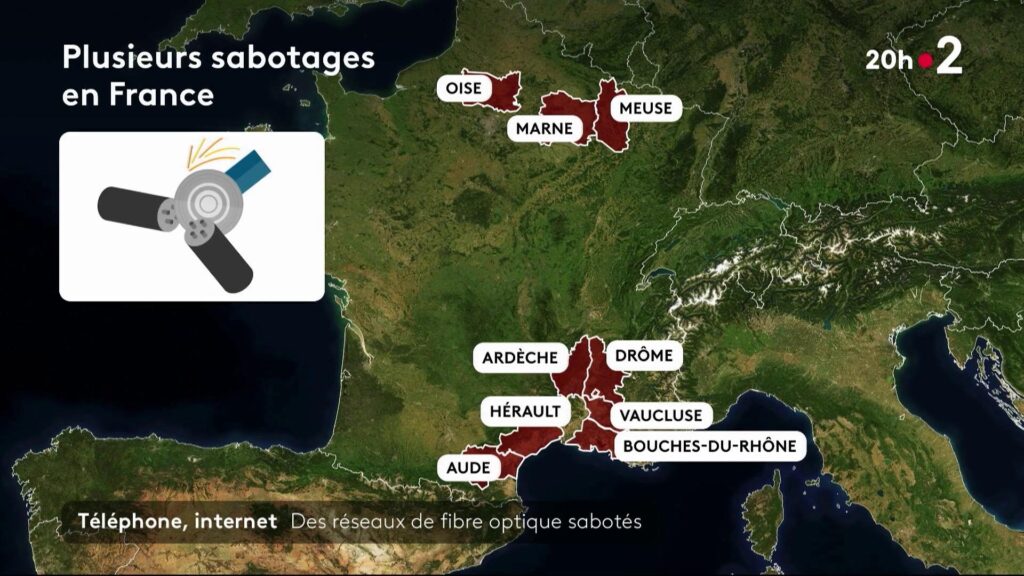
So, with this series of attacks, there is a severe slowing or outright interruption of the high-speed flow of Internet traffic via national and international fiber optics, mobile telephony (with hundreds of cell towers linked together by fiber) and the traffic to data centers, despite all the blah blah from specialists about network redundancy.
Faced with this second wave of coordinated sabotage, which follows closely on the heels of the one against the rail network, the reaction of governmental frustration was mainly heard through the voice of Marina Ferrari, Secretary of State for the Digital Economy, who of course denounced “cowardly and irresponsible acts”, before specifying that “the Center for Defense Electronic Communications (CCED) is cooperating with operators until communications and services are fully restored”. But the most eagerly-awaited reaction, from the Fédération Française des Télécoms, came shortly afterwards, pointing directly to the link with the Olympic Games: “Several outages were observed during the night of July 28 to 29 on major electronic communications infrastructures. The timing of these events and the infrastructures targeted point to acts of sabotage… the FFT strongly condemns these cases of vandalism which affect the lives of French people, at a time when the eyes of the whole world are on the Olympic and Paralympic Games.”
To get an idea of what happened on the enemy’s side of the barricade, you can turn to Jacky Allamelou, regional maintenance manager at SFR, who visited the sabotage site in the Hérault region: “I was alerted at 4am on Monday morning. The fiber optic cable had been severed very cleanly in four of the five chambers on the site. The chambers are, in fact, concrete manholes buried in the ground and protected by cast-iron manhole covers. To lift the manhole covers, hooks are needed. And to sever such cables, a simple pair of pliers is not enough! The cables have been cut flush, which leaves us no room for manoeuvre that is required for rapid repairs… We have some 400 cables to solder. We have six kilometers of fiber to pull, which will take even longer” (Midi Libre, 29/7).
To carry out repairs, particularly when cables have been cut flush, technicians from subcontracting companies (in this case the inevitable Circet, Axians or AB Telecoms) have to reinstall kilometers of fiber optic cable, then re-solder the connections one by one. Following the various sabotages that occurred between 1 and 3 a.m., the telecom operators first had to pinpoint the exact location of the cuts (SFR has 25,000 km of backbone throughout the country), then send technicians to the site to ascertain the cause, then wait for the forensic police to take a maximum number of samples in the morning, and only then could they begin the repairs in question. On the evening of July 29, SFR announced that repairs had been completed in Meuse and Oise, but that its predictions were only “around 9 p.m. in Bouches-du-Rhône and around midnight in Hérault.” As for the Drôme and Aude regions, this would not be until Tuesday, due to the difficulties involved in locating the sabotage, meaning over 24 hours of effective interruption.
Taking a quick look at the regional press, here’s also a provisional overview of the locations and consequences of these simultaneous sabotages:

Capestang (Hérault), July 29: one of the sabotages against the fiber-optic highway, which particularly affected the local police, gendarmerie and courts

Capestang (Hérault). On the banks of the Canal du Midi near the Domaine de l’Ale, anonymous individuals sabotaged SFR’s infrastructure, which houses many connections dedicated to public administrations such as the gendarmerie, the police and the justice system. A large number of cables were cut in the site’s five chambers (concrete manholes buried in the ground and protected by cast-iron manhole covers), disrupting telephone, fiber and Internet connections throughout the area.
In all, the Hérault prefecture reports that “8,000 homes, mainly around Béziers, as well as 91 businesses and administrations” were affected, while Free (which also used this infrastructure) reports disruptions to 27 cell towers, “representing around 34,000 customers whose access to the mobile network was affected”.
In addition, the court in Béziers was deprived of landline telephone and internet access for a long part of the day, while the Vacaf website (vacations linked to family benefits), which is managed for the whole of France from a data center in Montpellier, was out of action until 6.30pm, when the sabotaged backbone in Capestang was repaired.

Contrisson (Meuse), July 29: one of the sabotages against the fiber-optic highway, which passes through open countryside here.
Contrisson (Meuse)Around 2 a.m., “five fiber optic cables at four chambers (manholes)” were cut in the Revigny-sur-Ornain area, near Contrisson. “The manholes were not locked; the manhole 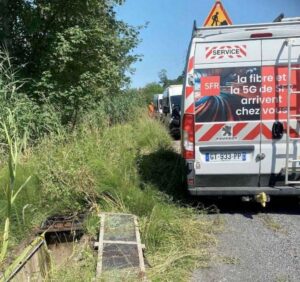 covers were then thrown into the Meuse river,” says the Bar-le-Duc public prosecutor’s office, adding that “a tag was made with orange paint directly on the pavement ‘STOP CIGEO’, ‘KANAKS LIBRES'”. Around 40,000 people were left without access to the network for several hours.
covers were then thrown into the Meuse river,” says the Bar-le-Duc public prosecutor’s office, adding that “a tag was made with orange paint directly on the pavement ‘STOP CIGEO’, ‘KANAKS LIBRES'”. Around 40,000 people were left without access to the network for several hours.
Among the major operators affected were 2 of the Inherent’s 14 data centers, located in Maxéville (54): “Two huge simultaneous breakdowns on the networks between Nancy and Paris, and Nancy and Lyon. One on a 100 gigabit-per-second network, that never happens. Normally, we drive on a highway. Here, there’s an accident. So we made our customers use the secondary roads. Traffic was therefore slowed down considerably, and even cut off for some. Cables were cut in bundles. For suppliers, it’s taking a long time to repair”.
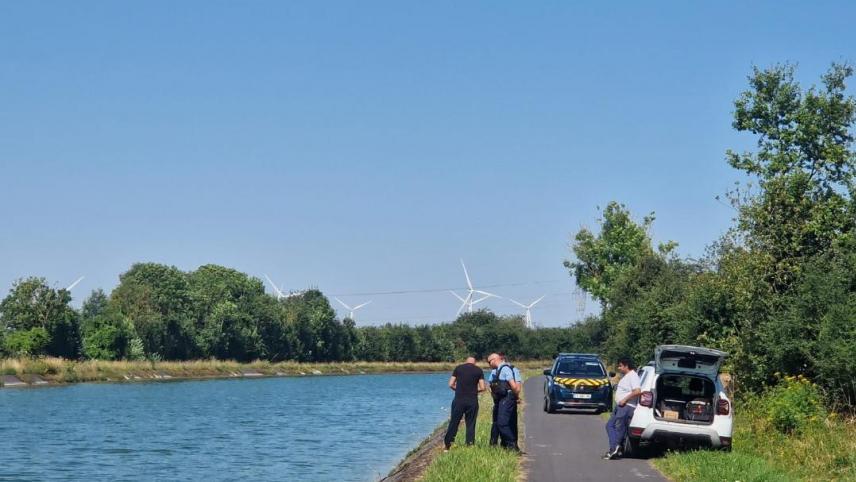
Béhancourt (Oise), July 29: one of the sabotages against the fiber-optic highway, which runs here along the Canal du Nord.
Sermaize (Oise). In this département, located on the outskirts of the capital, the acts of sabotage were perpetrated at 0:50 a.m. in the hamlet of Sermaize, between Catigny and Béhancourt, at a location along the Canal du Nord, where the long-distance fiber-optic network “serves the départements of Oise and Nord”.
Montélimar (Drôme). At this location, about which little information has been released, the sabotaged cables supplied the cell towers of the 4G network linking the towns together. This nocturnal section thus impacted mobile telephony in the communes of Montboucher, Espeluche and Montélimar. In Montélimar, 16 cell towers were taken out of service.

Le Rove (Bouches-du-Rhône), July 29: one of the sabotages against the fiber-optic highway, which passes through the Calanques.

Between Le Rove and l’Estaque (Bouches-du-Rhône). The Aix-en-Provence public prosecutor’s office describes the sabotage as “the severing of buried lines in a wooded area” (sic), with cables from two chambers sabotaged, and announces “significant disruption for users”. Among the businesses affected, for example, was the internet network at Marseille-Marignane airport, which was severely slowed down until late morning, as well as numerous businesses and shops disconnected right up to Marseille’s Vieux-Port, where a pharmacist described her dismay in the local press: “The telephone, computers and bank terminal weren’t working. Of course, when everything’s connected, it’s annoying”. (La Provence, 7/29)
In addition, the operator Free, which also uses this long-distance fiber, announced that it had recorded numerous incidents on the interconnection network, with several fiber cross-connects affected, mainly around the Etang de Berre, in Port-de-Bouc, Martigues, Fos and Istres.
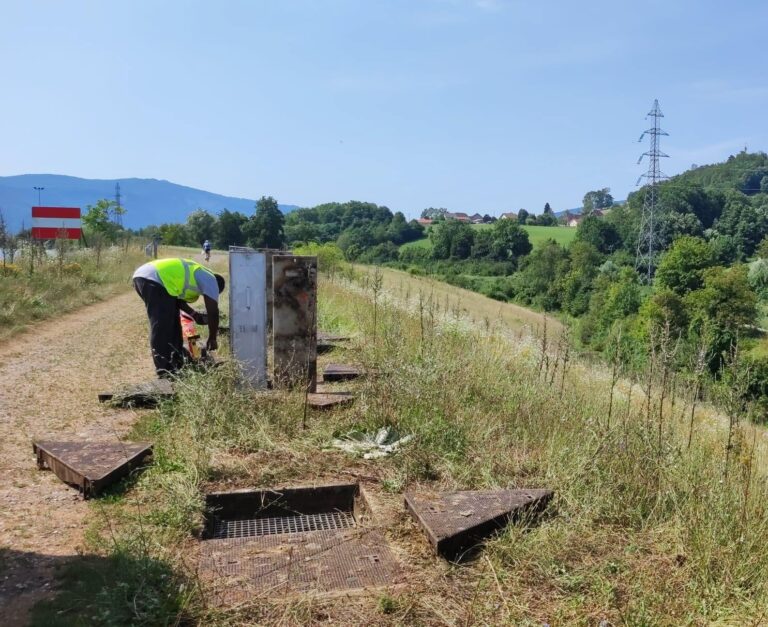
Brens (Ain), July 29: one of the sabotages against the fiber-optic highway, which here runs along the banks of a Rhône diversion canal, upstream of the dam at the Belley hydroelectric power station.
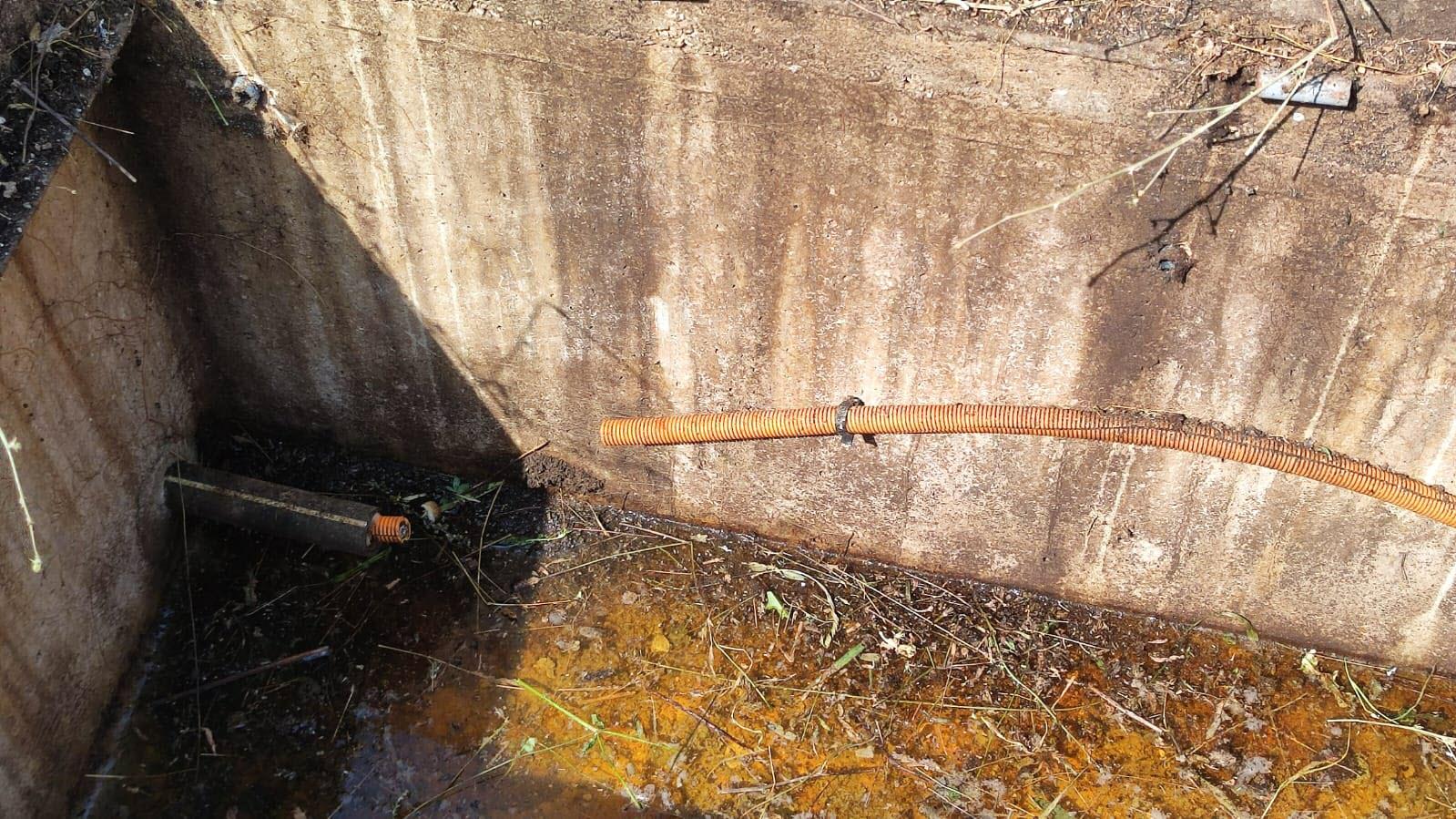
Montmerle-sur-Saône & Brens (Ain). The first site sabotaged in the Ain region was reported in an incident report from Inherent, a company based in Maxéville (Lorraine), which owns 14 data centers. Its surprise came at around 2:30 a.m., when two different backbones were cut, severely affecting it: the first was sabotaged in Meuse (on the Paris-Nancy fiber highway), about which more details are given above, and the second was sabotaged 7 kilometers from Montmerle-sur-Saône (Ain, on the Nancy-Lyon fiber highway), where “a cable was completely severed”. It was not until around 5 p.m. that the two Nancy data centers were able to resume normal operation.The second sabotaged site in the Ain region, to the east of Lyon, appeared in the local press the following day (Le Progrès, 30/7), reporting that it took place on the banks of a Rhône diversion canal, upstream of the dam at the Belley hydroelectric power station, with an SFR fiber optic cable cut over a distance of some thirty centimeters. The entire area from Culoz to Belley, via Saint-Sorlin-en-Bugey and Brens, was affected by this cut, with thousands of users affected. The repairs will require the removal of cables over several kilometers, and will take several more days.
On the government side, as with the sabotage of the TGV network three days ago, it is the Paris public prosecutor’s office that has taken up the case through its National Jurisdiction of the Fight Against Organized Crime (Junalco). It has opened an investigation into “damage to telecommunications relay equipment” committed on Sunday night, under the headings of “damage to property likely to harm the fundamental interests of the nation”, “attacks on an automated data processing system in an organized group” and “criminal conspiracy to commit these crimes and offenses”. The investigations were entrusted to the Anti-Terrorist Sub-Directorate (SDAT) of the Judicial Police and to the General Directorate of the National Gendarmerie (DGGN).
Finally, to refresh our memories, the journalist-cops were keen to remind us that in April 2022, a coordinated action had already struck the SFR and Free network, cutting off access to the Internet highways over a good part of the country. And to conclude, after these new sabotages against critical infrastructures, it’s now “the trail of violent anarchist groupuscules, linked to the ultra-left [that] is being explored because of the modus operandi and the symbolism of the targets”, according to a loyal spokesman for the cops (Le Parisien, 29/7). Or, put another way, “while the Paris 2024 events are in full swing, the forces of law and order are launched into a real marathon to intercept the gravediggers of the Olympic dream” (Le Figaro, 30/7).
[Synthesis of the regional and national press, July 30, 2024]
via: sansnom.
Translated by Act for freedom now!
